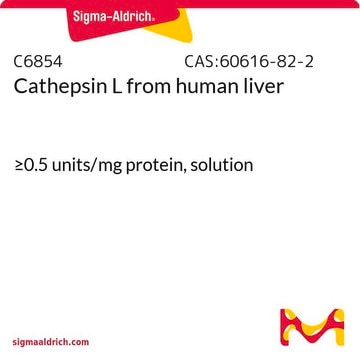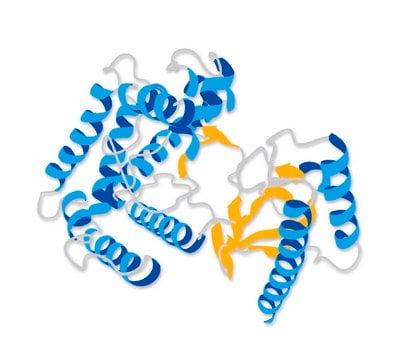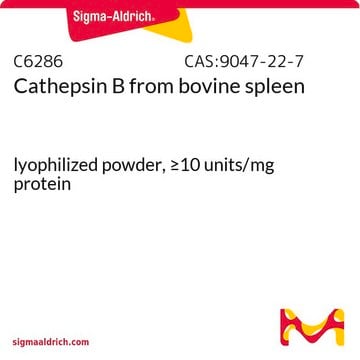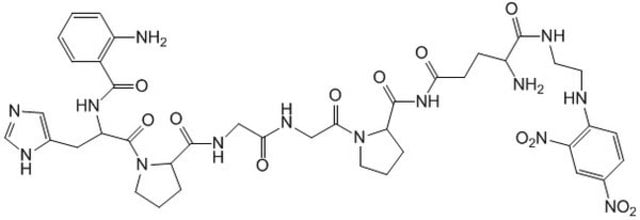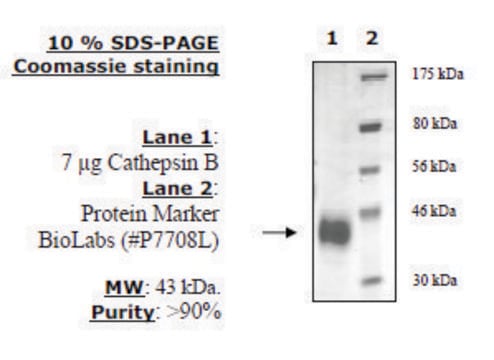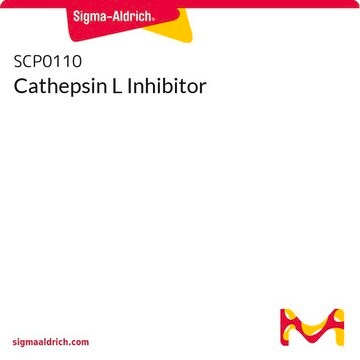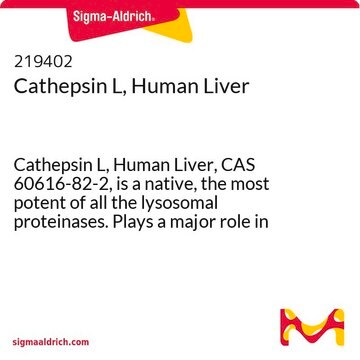SRP0291
Cathepsin L Active human
recombinant, expressed in FreeStyle™ 293-F cells, ≥90% (SDS-PAGE)
Sinonimo/i:
CATL, Major excreted protein (MEP)
Scegli un formato
About This Item
Prodotti consigliati
Origine biologica
human
Ricombinante
expressed in FreeStyle™ 293-F cells
Saggio
≥90% (SDS-PAGE)
Stato
aqueous solution
Attività specifica
≥3900 pmol/min-μg
PM
36 kDa
tecniche
inhibition assay: suitable
Compatibilità
suitable for molecular biology
N° accesso NCBI
applicazioni
life science and biopharma
Condizioni di spedizione
dry ice
Temperatura di conservazione
−70°C
Informazioni sul gene
human ... CTSL(1514)
Descrizione generale
Cathepsin L is a papain-like cysteine protease and belongs to the Clan A, Family C1.[1] It is composed of L domain of α-helix and an R domain of β-sheet in the spatial structure.[2]
Human cathepsin L (GenBank Accession No. NM_001912), amino acids 18-333, with C-terminal HIS tag, MW = 36 kDa, expressed in FreeStyle 293-F cells.
Applicazioni
- to determine that N-acyl and N-sulfonyloxazolidine-2,4-diones are pseudo-irreversible inhibitors of serine proteases[3]
- to investigate the role of cathepsin B and L activity in the serum during the human aging process. [4]
- in inhibitory activity assay[2]
- to study the role of CTSL in COVID-19 infection[5]
Azioni biochim/fisiol
Definizione di unità
Stato fisico
Nota sulla preparazione
Note legali
Codice della classe di stoccaggio
10 - Combustible liquids
Classe di pericolosità dell'acqua (WGK)
WGK 1
Punto d’infiammabilità (°F)
Not applicable
Punto d’infiammabilità (°C)
Not applicable
Scegli una delle versioni più recenti:
Certificati d'analisi (COA)
Non trovi la versione di tuo interesse?
Se hai bisogno di una versione specifica, puoi cercare il certificato tramite il numero di lotto.
Possiedi già questo prodotto?
I documenti relativi ai prodotti acquistati recentemente sono disponibili nell’Archivio dei documenti.
Active Filters
Il team dei nostri ricercatori vanta grande esperienza in tutte le aree della ricerca quali Life Science, scienza dei materiali, sintesi chimica, cromatografia, discipline analitiche, ecc..
Contatta l'Assistenza Tecnica.